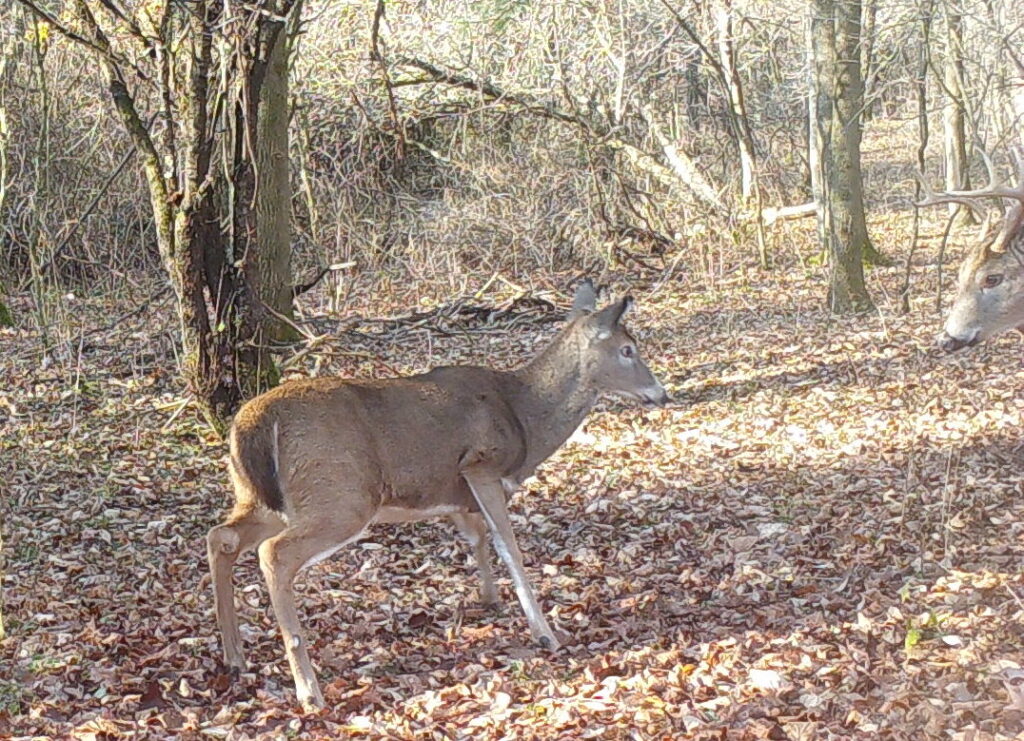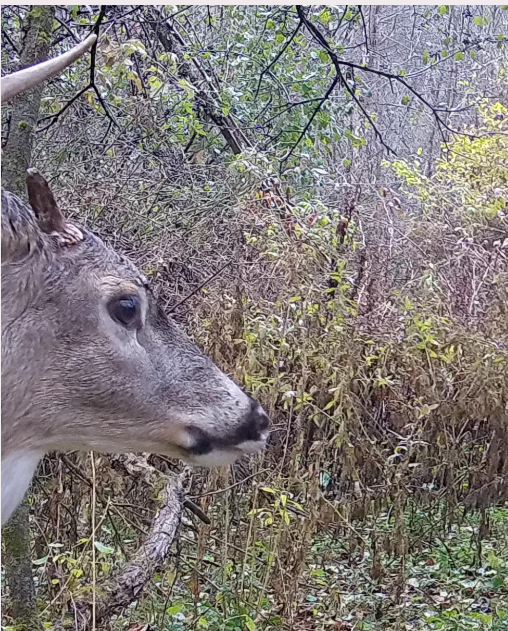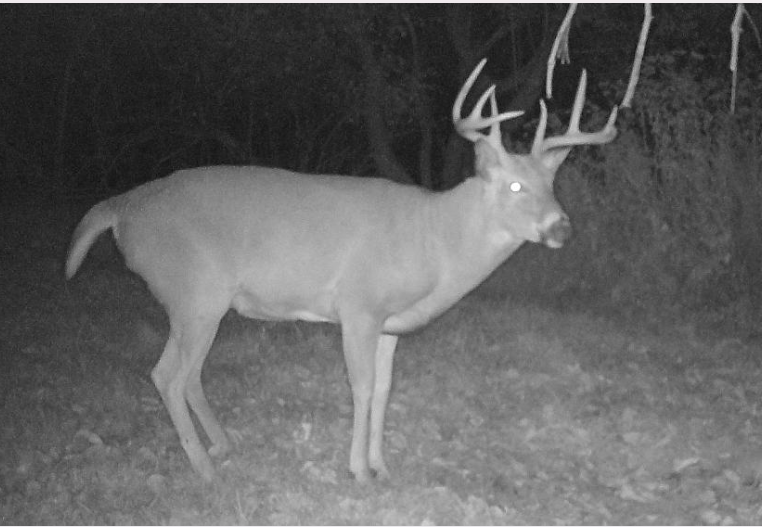Meet the bachelors: Buck fawns, Subdominant Floaters, Dominant Floaters
By Oak Duke, pictured is a rare alpha buck
Over the last 50 years, deer researchers have taken on the daunting task of pulling back the curtain on the whitetail buck bachelor group structure and even assigning names to the order.
Actually, much earlier groundwork was done by behavioral scientists in Europe studying their ungulates (hoofed critters.)
But the North American whitetail, though heavily studied by scientists in enclosures, as deer hunters will attest is very difficult to pin down when free-ranging…wild.
Understandings that we gain, and behavior patterns we perceive when animals are constrained in large cages or even high-fenced acreages designed to simulate natural environments, are not always applicable or translatable to those same species in the wild.
But nonetheless, research plods on. And now aided with radio-tracking devices as well as motion-activated cameras… added to countless hours of observation, a basic structure for the male whitetail society has precipitated.
The whitetail bachelor group is at the heart of the male deer community and each bachelor group of whitetails from Texas and Mexico throughout the United States and into Canada, their entire range, is made up of essentially the same structural elements as they are herd animals.
All bucks though, in any given environment, are not members of the bachelor group.
For instance:
Button bucks, as we call them, are buck fawns.
As soon as they lose their spots after hitting the ground, mostly in May and June here in the Northeast and the Midwest, BB’s act and behave very much like the females of the species that bore and nurtured them.

Button bucks are attached to the doe that birthed them, moving from bedding area to food source and back again throughout their first year. And of course not a member of the bachelor group of bucks. That will come later for them.
The second group of bucks that is not a member of the bachelor group is what is termed by researches as Subdominant Floaters.
Many yearling bucks, sprouting their first set of antlers, pledge and are accepted into a local bachelor group.
But there are some that do not belong, whether they are suppressed, intimidated, lacking in hormonal maturation, or some other behavioral lagging mechanism, they opt out of belonging to a bachelor group and become Subdominant Floaters.
Many of these young bucks disperse far and wide, some recorded as traveling 100 miles or more.
On the other end of the age spectrum in the male whitetail society are the Seniors, and in our heavily hunted woods this tiny segment of the male society is few and far between. But every once in a while, an old buck of close to a dozen years or more is found.
These oldsters participate little in the rollercoaster hormonal ride of the Rut, or breeding time, as they once undoubtedly did. Their antlers and their bodies are not what they were in their prime, and many have teeth worn down to their gums, so their reduced food and caloric intake accelerates their physical decline.
The jury is out on the exact extent of Bachelor Group participation in the next category of buck… being a member of a bachelor group or not. This category of buck is termed the Dominant Floater, “Mr. Fantasy” for most deer hunters.
The Dominant Floater is the Alpha whitetail buck in every respect.
They are rare, (but nobody can say how rare.)
These are the “brag” bucks hunters get on their trail cameras in late summer and early fall, but then disappear as soon as hunting season starts.
In late October and November, these superior bucks travel far and wide, leaving their sanctuary haunts, and along the way, terrorizing other bucks no matter their status and all the while leaving their pheromonal signature on the perennial Signpost Rub, along with any other Buck scrape to their liking… all in their quest to find does nearing estrus.

Mostly, these superior Dominant Floaters intimidate all other bucks with their size, stature, and bearing. That is until they run into another Dominant Floater, and then the fur flies and their fights tear up the forest floor. These battles between Dominant Floaters can have a lethal ending…the demise of one of these highest-ranking combatants.
And that leads us to the main subject of this inquiry…the Whitetail Bachelor Group, made up of two levels of card-carrying members, one the rank-and-file members, and two, the bosses called Dominant members. They are most often four-, six-, eight-, and even 10-point bucks.
Bachelor groups begin to reform up here in late December and remain intact throughout the rest of the winter, springtime and throughout the summer and early fall. And have nothing to do with does, the females.
And when the Bachelor group moves from bedding cover to food sources and back again, there is a relatively strict code, sometimes tested and sometimes reinforced, known only to them, who leads and who follows.
As in all animal hierarchies, these bucks that make up the Bachelor group carve out their relatively rigid chain of command, especially when velvet comes off their antlers, here in September.
Whitetail bachelor groups lose their cohesion as the Rut ramps up in October (other areas of the country, like the South have different breeding times.)
But the Whitetail bachelor group’s hierarchical pattern, dynamics, and constituency at large, no matter the latitude, unfolds in the same societal fashion.
Oak Duke, Wellsville, NY, January 2024
Facebook pages:
Whitetail Page: www.facebook.com/Oak.Duke.whitetail.page
Duke’s Honey: www.facebook.com/Dukes-Honey-513590015445371/








